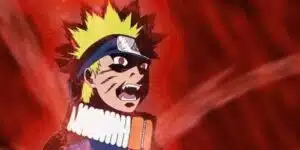
It’s official: there are now more Naruto games out in the wild than there are panda bears, African elephants and Siberian tigers. Such is the rabid, seemingly infinite supply of his games hogging shelf space in a game shop near you. It’s understandable, given that the games are cheap to develop and there are plenty of Otaku out there, always in need of another anime fix. When taking a quick glance at the genres he’s appeared in, fighters and adventures seem perfectly acceptable, turn-based RPG’s littered with constant random battles are generally not, and the latter is exactly what we’ve got here, in Naruto: Path of the Ninja 2.
Whether this decision was a result of needing to differentiate from other Naruto titles, or simply to satisfy Japanese consumers, who still hold games in this style close to their hearts, is unclear. After all, games in the vein of 16-bit Final Fantasy titles can still do major business in Japan, but for many of us, playing games like this is like a throwback to the days without electricity.
Storywise, there are no surprises here. Village attacked by mysterious ninjas, sole survivor = distraught girl, distraught girl seeks help, distraught girl bumps into Naruto, Naruto offers to help, Naruto rallies his buddies for support, Naruto saves world, distraught girl teases Naruto, Naruto gets frustrated, Naruto retreats to his room with half a dozen hentai mags.
OK, so the end of that never actually took place, but the point remains: if you’re here for Shakespeare, look elsewhere.
Gameplay is divided into two halves. The first deals with exploration, chatting to the locals, collecting and buying items, and fiddling around with menus — the usual JRPG conventions ripped straight from the ’80s. Second, there’s the fighting. As it happens, the combat takes a more contemporary approach than its stuck-in-the-past other half.
The battlefield is divided into 24 squares, 12 for the good guys, 12 for the bad. You’ve got the ability to move along the grid, where getting closer enables you to inflict greater damage, while taking a few steps back allows for greater defense with a reduced attack. The grid is actually a useful tactical tool that makes you think a few steps ahead, while also encouraging strategic placement of your band of fighters.
For instance, you could place your toughest fighters on the frontline, while your weaker teammates focus on healing and light attacks. When your brutes have taken as much punishment as possible, drop them back to recover, put the weaker ones forward and let them do their bit till the big guns are ready again. It’s a surprisingly well-realized combat mechanic that acts as a juxtaposition to the exploration sections.
In theory this sounds fine, however, the only real time you’re required to dig deep is during the boss battles, or when you’ve encountered enemies much stronger than you, (in which case it’s best to use the ‘flee’ option). For the most part, pounding the ‘A’ button on the DS till you’ve got the letter imprinted on your thumb is the call of the day when facing off against the numerous faceless mannequins you’ll randomly encounter along the way.
If there was a little more challenge, or if the battles weren’t random, then the combat engine could really have stood out. However, after about 15 minutes you’ll tire and pity for what is a neat trick, reduced to collateral damage as the developer fails to realise that random battles are now a tradition that most of us can live without.
The controls are fine using either D-pad/face buttons or the touch screen, with a few stylus-only mini games thrown in to power up Naruto’s jutsu power (which would be “magic” in any other game). Still, it’s nothing we haven’t seen in countless other games before, and when compared to, say, the majestic The World Ends With You, Naruto: Path of the Ninja 2 comes across as DS game design circa 2005.
The truth is there are far more worthy DS RPGs available, ones that have actually embraced the DS hardware either in the control or graphics department, Something that Path of the Ninja 2 has failed at epically. More importantly, Tomy appears to have forgotten that Naruto is a global brand nowadays, and chances are that its audience in the west may not even be familiar with a game structure most likely older than they are.
Though he may be the clown prince of anime now, if he continues along this path it won’t be too long before Naruto goes the way of the dodo.

